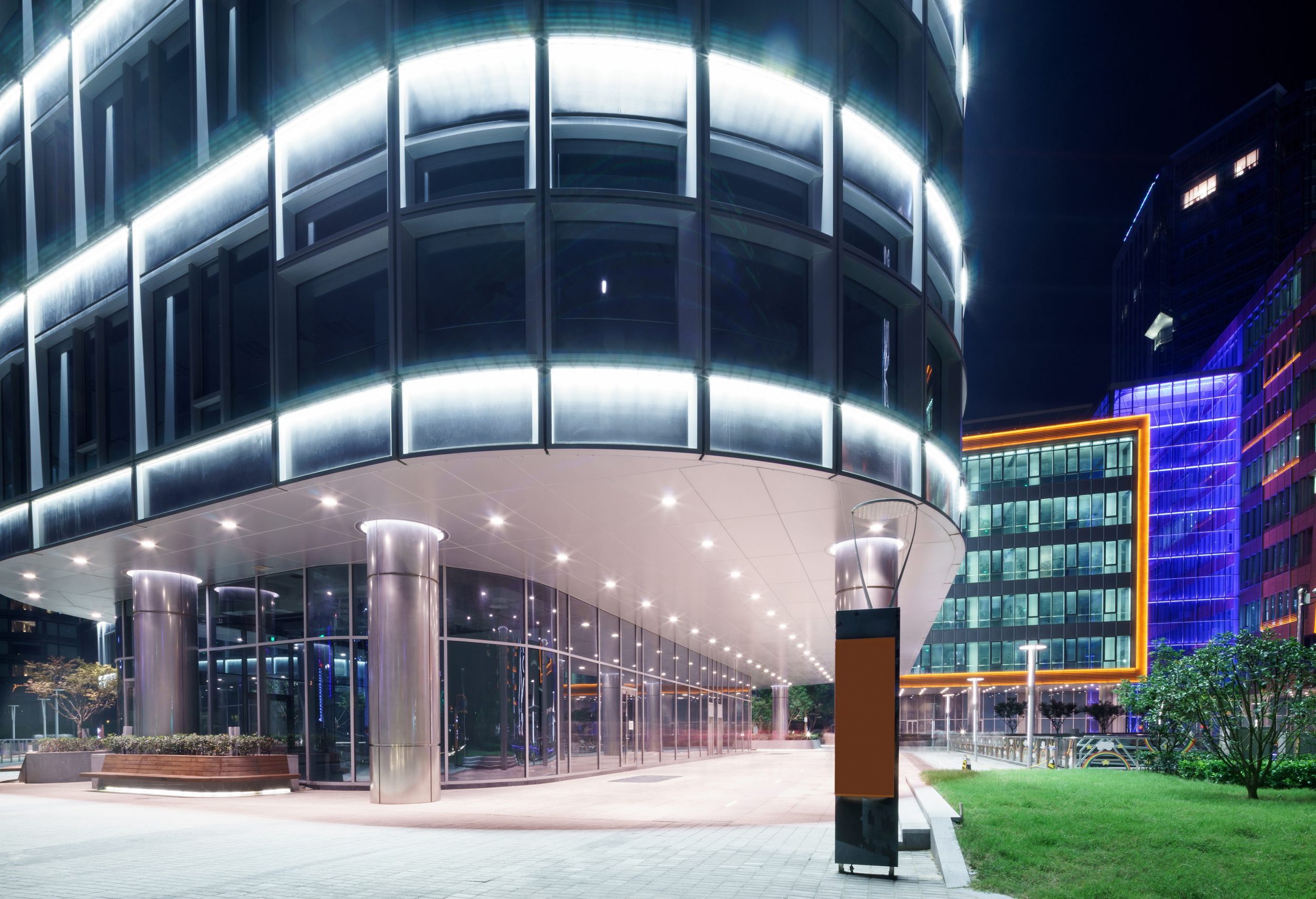With this in mind, lighting design is specifically tied to functionality, which is much more important in commercial applications than residential ones.
CES District Manager Jim Glass weighs in on the flexibility that contractors always look for in lighting design.
“Lumen and color tuning are by far the most popular features,” he said. “One fixture can give you three to four color choices and two to three options for lumen output, all at the flick of a couple dip switches on the back of the fixture.”
That customizable feature is important across all types of commercial lighting applications:
- Decoration: Restaurants, bars, and hotels are an example of decorative lighting and need different lumen outputs to accentuate the atmosphere.
- Area lighting: Factories, distribution centers, warehouses, and more require large areas to be well lit. LED luminaires help improve energy efficiency and visibility, both important factors when considering commercial lighting design.
- Signage: From emergency fixtures to advertising and storefront signage, this is another important application in commercial lighting design.
Finally, commercial lighting has to highlight areas with high movement and traffic for safety purposes. As a result, commercial lighting requirements are naturally much more demanding.





